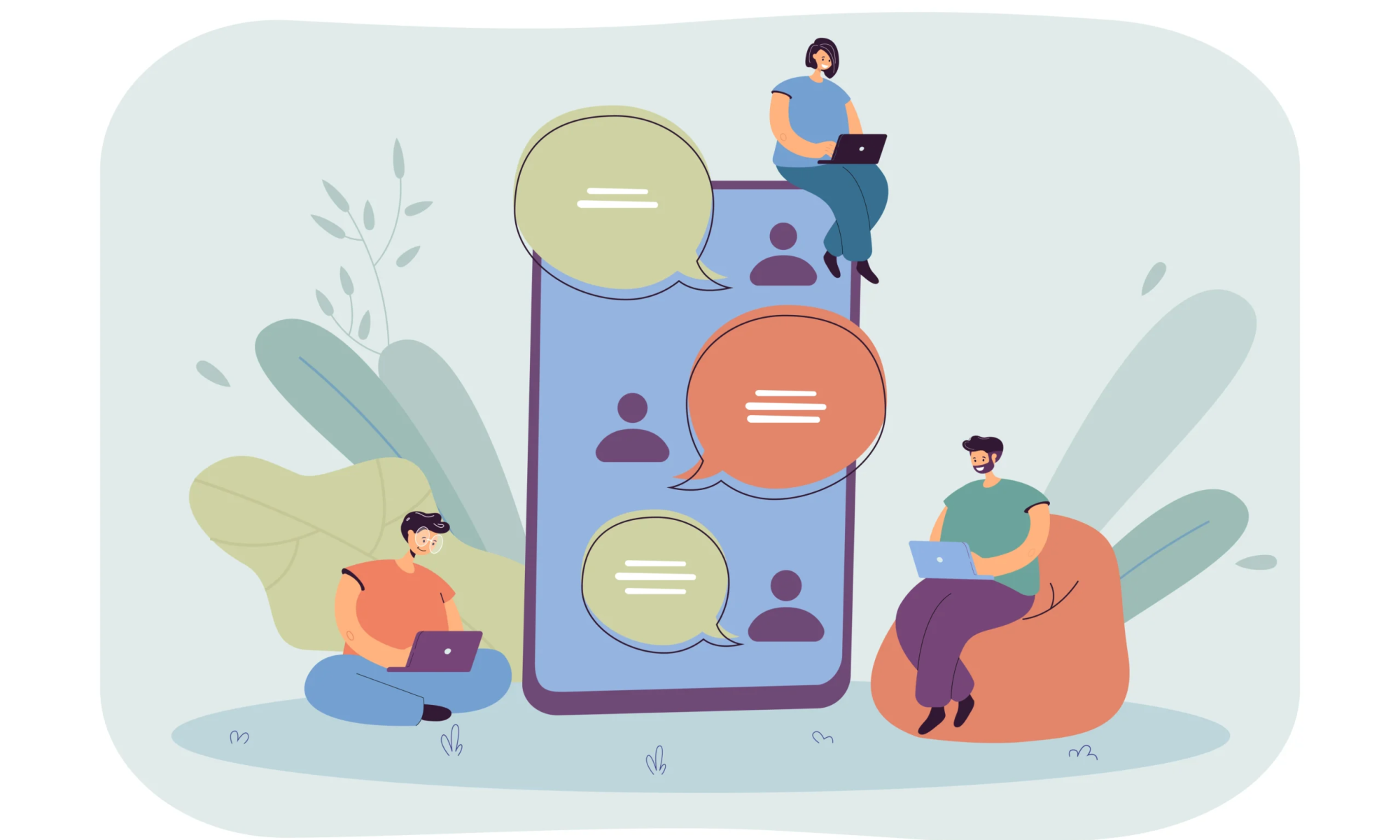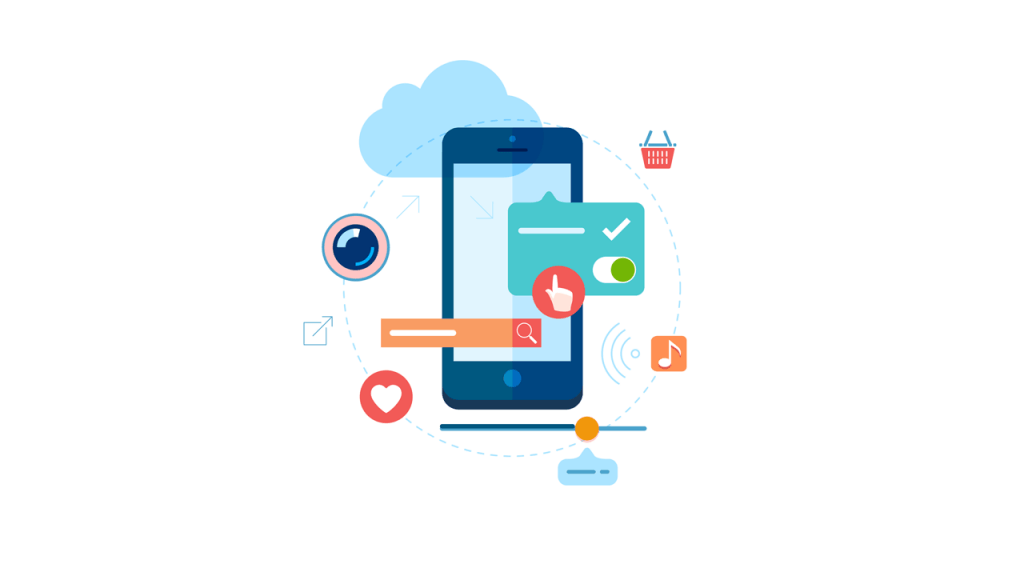Introduction to Message Organization and Chat Management
As an experienced writer, I understand the importance of clear and organized communication, especially in the digital age where we rely heavily on chat platforms for both personal and professional interactions. Effective message organization is the key to streamlining conversations, improving accessibility, and enhancing overall productivity.
In this article, we will delve into the world of message filters and explore how they can transform your chat management experience. We’ll discuss the significance of message filters, the different types available, and practical steps to set them up in popular chat platforms. Additionally, we’ll cover tips for organizing and managing messages effectively, share real-life case studies, and explore the best practices for using filters to enhance accessibility.
The Importance of Message Filters in Improving Chat Accessibility
Message filters play a crucial role in improving the accessibility of chat platforms, particularly for individuals with disabilities or those who prefer a more structured communication environment. By enabling users to customize their message display, filters can help address a variety of accessibility needs, such as:
- Visual Impairments: Filters can assist users with visual impairments by allowing them to adjust font size, color, and contrast, making the chat interface more comfortable and legible.
- Cognitive Disabilities: Filters can help individuals with cognitive disabilities by organizing messages into logical categories, reducing visual clutter, and providing clear cues for important information.
- Hearing Impairments: For users with hearing impairments, filters can be used to highlight or display critical audio-based notifications, ensuring they don’t miss important updates.
- Language Barriers: Filters can facilitate communication for users who speak different languages by providing translation options or allowing them to group messages by language.
By addressing these accessibility considerations, message filters empower users to tailor their chat experience, fostering inclusive and equitable communication.
Understanding Different Types of Message Filters
Message filters come in a variety of forms, each designed to address specific needs and preferences. Let’s explore some of the most common types of message filters:
- Sender Filters: These filters allow users to group, prioritize, or hide messages based on the sender’s identity or role within a chat.
- Time-Based Filters: With these filters, users can organize messages by date, time, or time range, making it easier to find and reference past conversations.
- Content Filters: Content filters enable users to sort messages based on keywords, topics, or message content, helping them quickly locate relevant information.
- Notification Filters: Notification filters allow users to customize which types of messages trigger alerts or notifications, ensuring they stay informed without being overwhelmed.
- Attachment Filters: These filters help users identify and manage messages containing specific types of attachments, such as images, documents, or links.
- Unread/Read Filters: Unread/read filters make it simple to differentiate between new and previously viewed messages, aiding in message tracking and organization.
Understanding the diverse range of message filters available can empower you to tailor your chat experience and optimize your message organization workflow.
How to Set Up Message Filters in Popular Chat Platforms
Integrating message filters into your chat management process can be a game-changer. Let’s explore how to set up these powerful tools in some of the most popular chat platforms:
- Slack: Slack offers a robust set of filtering options, including the ability to filter by sender, channel, message content, and more. You can access these filters by clicking on the filter icon in the top-right corner of the Slack interface.
- Microsoft Teams: In Microsoft Teams, you can utilize the search and filter functions to organize your messages. Simply click on the filter icon in the top-right corner to access options like filtering by sender, date, and message content.
- Discord: Discord provides users with the ability to filter messages by various criteria, including user mentions, file attachments, and message content. You can access these filters by clicking on the filter icon in the top-right corner of the Discord interface.
- WhatsApp: While WhatsApp doesn’t offer as robust a filtering system as some other platforms, you can still utilize the search function to find specific messages or conversations.
- Gmail: For those who use Gmail as their primary communication channel, the platform’s built-in filtering system allows you to organize your messages based on sender, subject, and other criteria.
By familiarizing yourself with the filtering capabilities of the chat platforms you use, you can unlock the full potential of message organization and streamline your communication workflows.
Tips for Organizing and Managing Messages Effectively
Effective message organization goes beyond simply setting up filters. Here are some additional tips to help you manage your messages more efficiently:
- Develop a Consistent Naming Convention: Establish a clear and consistent naming convention for your chat channels, groups, or threads to make it easier to locate and reference specific conversations.
- Utilize Keyboard Shortcuts: Most chat platforms offer keyboard shortcuts to help you navigate and manage messages more quickly. Learn how to use these short cuts to increase your output.
- Implement a Message Archiving System: Regularly archive or delete old messages that are no longer relevant, freeing up space and reducing visual clutter in your chat interface.
- Leverage Pinned Messages: Use the pinning feature to keep important messages, instructions, or reference materials easily accessible at the top of your chat channels.
- Encourage Concise Communication: Encourage your team or chat participants to keep messages clear, concise, and on-topic, making it easier to process and organize the information.
- Establish Message Prioritization Protocols: Develop guidelines for how to prioritize and respond to different types of messages, ensuring critical information is addressed promptly.
By implementing these tips, you can create a more structured and efficient message management system, ultimately enhancing your overall productivity and communication effectiveness.
Also Read : How to Outsource Mobile App Development: A Step-by-Step Guide
Case Studies: Real-Life Examples of How Filters Improve Chat Management
To illustrate the real-world impact of message filters, let’s examine a few case studies:
- Accessibility for a Remote Team: In a distributed team working across multiple time zones, a company implemented robust message filtering capabilities to improve accessibility for members with various needs. Employees with visual impairments were able to customize font sizes and colors, while those with hearing impairments could easily identify important audio-based notifications. The filters also helped team members who spoke different languages to organize and translate messages, fostering inclusive communication.
- Streamlining Customer Support: A customer support team at a SaaS company leveraged message filters to enhance their efficiency and responsiveness. By setting up filters to categorize inquiries by product, urgency, and customer profile, the team could quickly identify and prioritize critical issues, leading to faster resolution times and improved customer satisfaction.
- Enhancing Project Management: A project management team utilized message filters to stay organized and on top of their tasks. They set up filters to group messages by project, task, and team member, making it easier to track progress, assign responsibilities, and collaborate effectively. This improved their overall project visibility and decision-making capabilities.
These case studies demonstrate how message filters can transform the way we manage and organize our digital conversations, leading to increased productivity, improved accessibility, and enhanced collaboration.
Best Practices for Using Filters to Streamline Message Organization
To ensure you get the most out of your message filters, consider the following best practices:
- Conduct a Needs Assessment: Start by evaluating your specific communication needs and pain points. This will help you identify the most useful filter types and configurations for your workflow.
- Experiment and Iterate: Don’t be afraid to try different filter setups and adjust them over time. Regularly review the effectiveness of your filters and make modifications as needed.
- Encourage Team Collaboration: If working in a group, collaborate with your team members to establish consistent filter configurations and naming conventions. This will promote a cohesive and efficient message organization system.
- Leverage Automation: Explore opportunities to automate your filtering processes, such as setting up rules to automatically categorize messages or trigger specific actions based on predefined criteria.
- Monitor and Analyze: Regularly review your message activity and filter usage to identify patterns, trends, and areas for improvement. This data-driven approach can help you refine your message organization strategies.
- Prioritize Accessibility: When configuring your filters, always keep accessibility in mind. Ensure that your settings cater to the diverse needs of your chat participants, promoting inclusive and equitable communication.
By following these best practices, you can unlock the full potential of message filters and transform your chat management experience.
Accessibility Considerations for Message Filters
As we’ve discussed, message filters play a crucial role in improving the accessibility of chat platforms. However, it’s essential to consider the specific accessibility needs of your chat participants when implementing these tools. Here are some key accessibility factors to keep in mind:
- Visual Impairments: Ensure that your filter settings allow users to adjust font size, color, and contrast to accommodate their visual needs. Provide clear visual cues and labels to help users navigate the filtering options.
- Cognitive Disabilities: Organize your filters in a logical and intuitive manner, with clear categorization and labeling. Avoid overwhelming users with too many options or complex configurations.
- Hearing Impairments: For users with hearing impairments, consider implementing filters that highlight or display critical audio-based notifications, such as mentions or important updates.
- Language Barriers: Incorporate translation capabilities or the ability to group messages by language to facilitate communication for participants with diverse linguistic backgrounds.
- Motor Impairments: Optimize your filter controls and settings to be accessible for users with motor impairments, such as providing keyboard shortcuts or easy-to-navigate interfaces.
By prioritizing accessibility in your message filter design and implementation, you can ensure that your chat platform is inclusive and empowers all users to participate fully in the conversation.
Tools and Resources for Optimizing Chat Management with Filters
To further enhance your message organization and chat management skills, consider exploring the following tools and resources:
- Chat Platform Integrations: Many popular chat platforms offer integrations with third-party tools that can extend the functionality of their built-in filtering capabilities. Explore options like Zapier, IFTTT, or platform-specific integrations to automate your message organization workflows.
- Productivity Apps: Utilize productivity apps like Trello, Asana, or Notion to complement your chat management efforts. These tools can help you organize tasks, track projects, and maintain a centralized hub for your communication activities.
- Online Tutorials and Guides: Refer to your chat platform’s developers’ online tutorials, user manuals, and guides to stay up-to-date on the latest filtering features and best practices.
- Accessibility Evaluation Tools: Leverage accessibility evaluation tools like WAVE, Lighthouse, or WebAIM to assess the accessibility of your chat platform’s filtering interface and identify areas for improvement.
- Community Forums and Support: Engage with online communities, user forums, and support channels to learn from the experiences of other chat users and exchange best practices for message organization and accessibility.
By leveraging these tools and resources, you can continuously refine and optimize your chat management strategies, ensuring your message organization workflows are efficient, accessible, and tailored to your specific needs.
Conclusion: The Future of Message Organization and the Role of Filters
As we look to the future, it’s clear that message organization and the role of filters will continue to play a crucial part in our digital communication landscape. With the increasing reliance on chat platforms for both personal and professional interactions, the need for effective message management will only grow more critical.
To stay ahead of the curve and master the art of message organization, I encourage you to explore the powerful capabilities of message filters and incorporate them into your daily communication workflows. Doing so will unlock new levels of productivity, accessibility, and collaboration, ultimately enhancing your overall communication experience.




